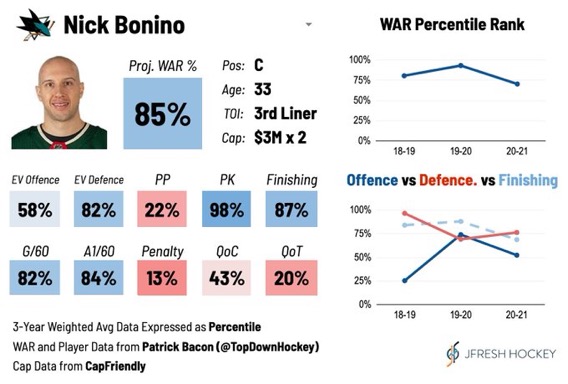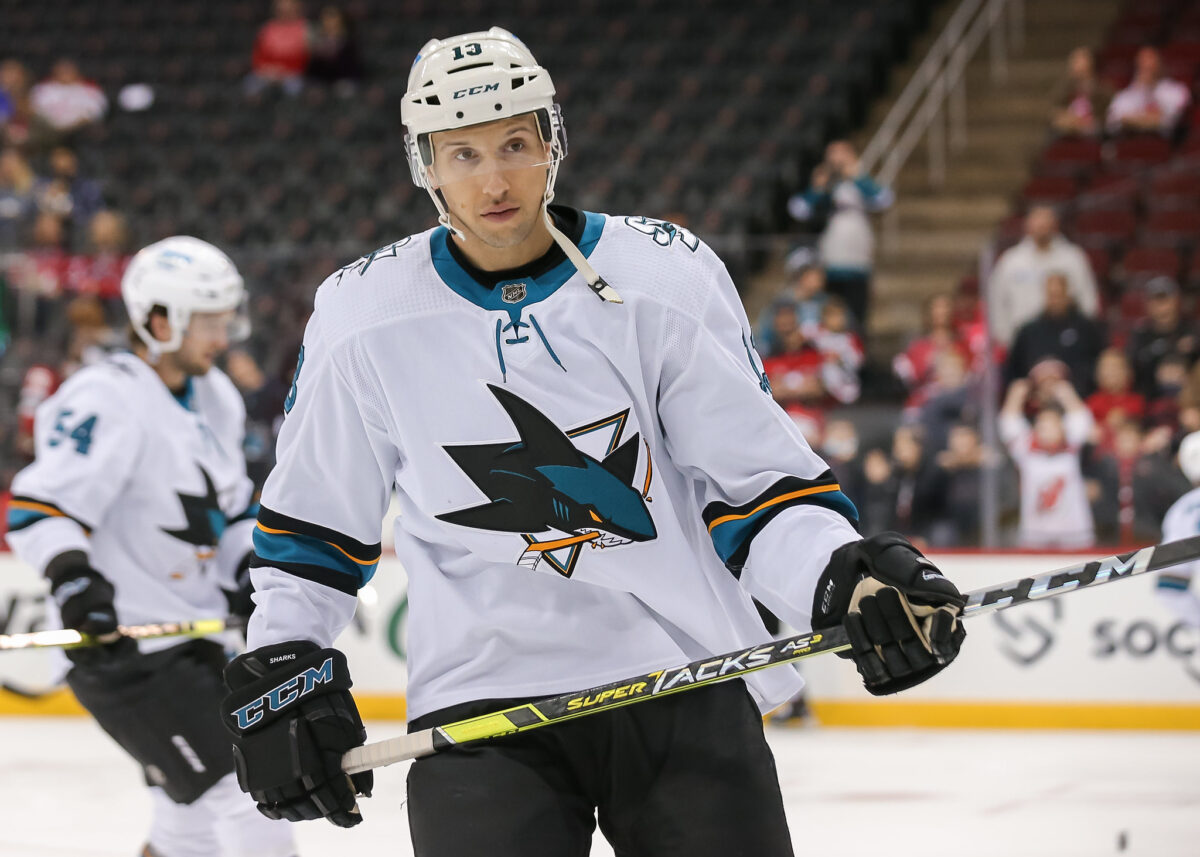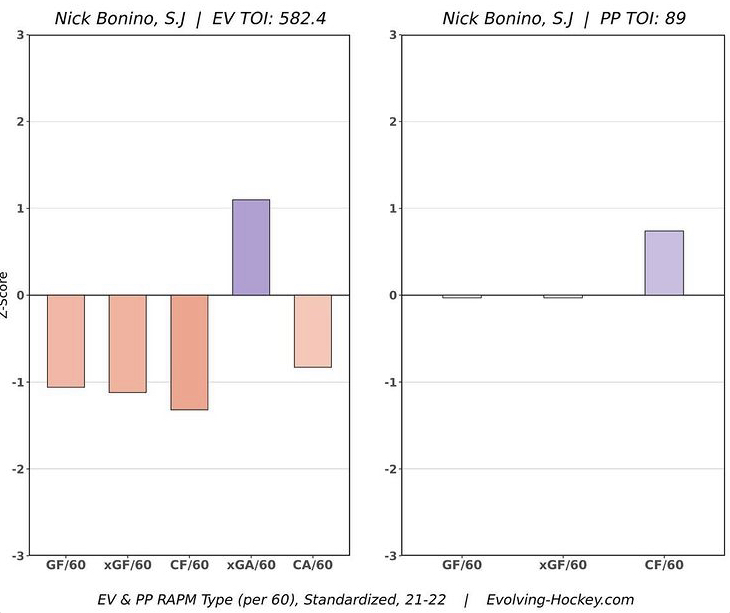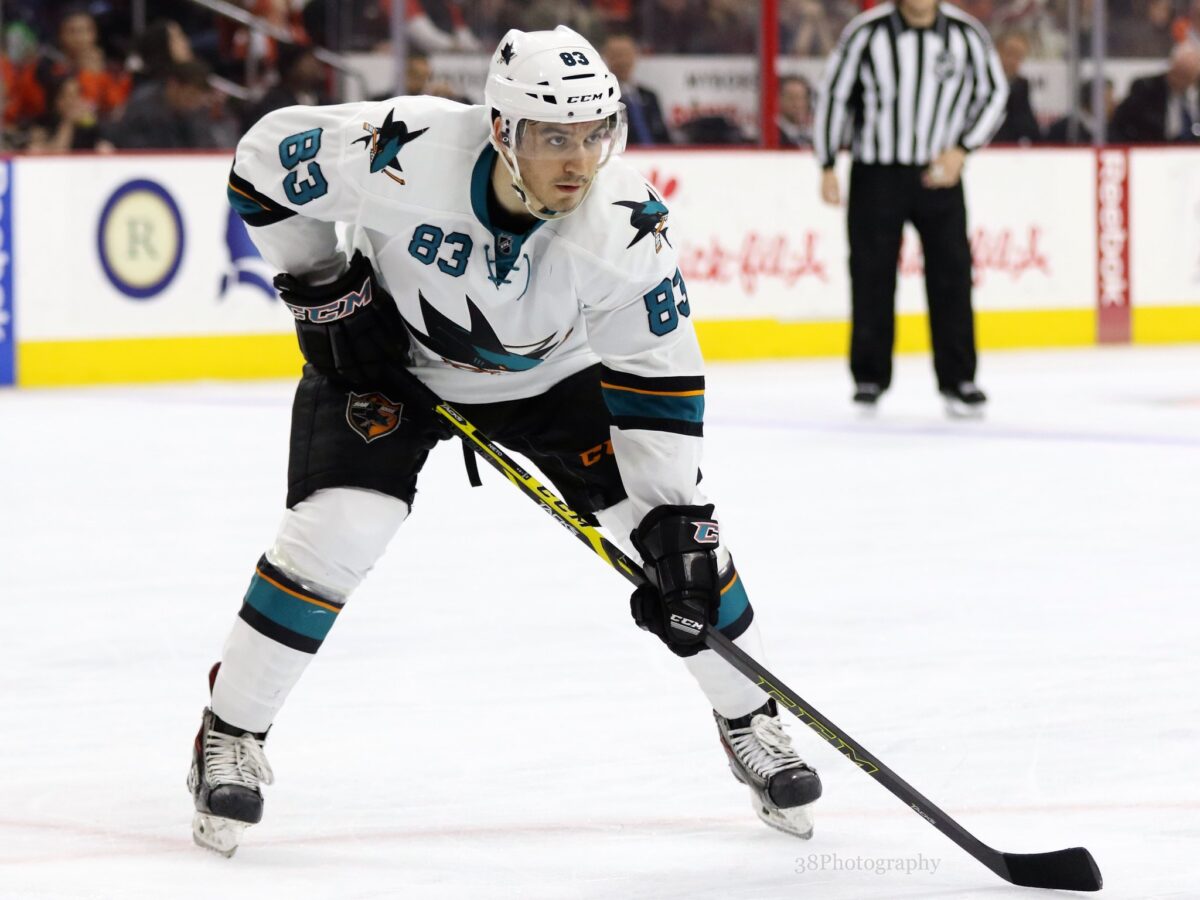“Bonino! Bonino! Bonino! Bonino! Bonino!!! NICK BONINO!!!!!!”
We’ve all seen the viral clip from the Punjabi broadcasting team from Hockey Night in Canada that perfectly captured the game-winning goal for Pittsburgh Penguins center in Game One of the 2016 Stanley Cup Final. He won back-to-back Stanley Cups with Pittsburgh before joining the Nashville Predators.
Fast forward to February of the 2021-22 season, and Nick Bonino is on the team he scored that iconic goal against, the San Jose Sharks. General manager Doug Wilson inked the veteran forward to a two-year deal, which includes a partial no-trade clause in the name of bolstering center depth and defensive structure.
So, how has the first season in teal gone? Should the Sharks be optimistic about next season with the aging forward?
Bonino’s Last Season & Expectations
Despite his age, I was personally incredibly optimistic about Bonino’s joining the Sharks. His final season with the Minnesota Wild showed some incredibly promising results while on just a decent squad.

Bonino’s scoring rate last season was stellar. He averaged 1.96 5v5 points per 60-minutes, which is an incredibly successful scoring rate. For reference, last season, the Sharks only had three players with a better rate in Tomas Hertl, Evander Kane, and Kevin Labanc.
JFresh’s model also rated Bonino as one of the best defensive forwards at even-strength and on the penalty kill. In Minnesota last year, he was an above-average impact on expected goals, according to MoneyPuck’s model.
When San Jose brought in the 33-year-old, I do not think anyone anticipated he would take on the massive defensive role he’s been given. After all, the Sharks also supplied themselves defensive specialists Andrew Cogliano and Matt Nieto in the same offseason.

But currently, all three veterans make up a third line that ordinarily attempts to shut down the opposing first or second line. While in theory, using the third line to shut down the top-six forwards could work wonderfully and allow Hertl or Logan Couture to dominate the opposing bottom-sixes.
But, that plan has not worked too well for San Jose.
Bonino’s Results So Far
Again, I need to reiterate the veteran is playing with some lackluster wingers while facing elite NHLers. His results, at least partially, will be influenced by that.
Related: Sharks 2021-22 Second Half Predictions
However, Bonino’s statistic profile is cause for concern. His 5v5 scoring rate has fallen off to almost a third of last season’s mark, with 0.73 points per 60-minutes. He has just five goals and eleven points in 45 games, including a 19-game scoreless streak to start the season. This is while bouncing around the first and second power play and averaging 16:43 of ice time nightly.
Defensively, he has not shown promising results. With Bonino on the ice, the Sharks control just 41% of shot attempts (Corsi%), which is second-last to Lane Pederson among San Jose forwards with a decent sample. In addition, the veteran has a -3.9% impact on expected goals.

Evolving Hockey’s RAPM model shows these negative impacts, where he is under-average in nearly every metric the model tracks, aside from expected-goals against per 60-minutes. Due to his declining play, age, and large role, Bonino’s impacts have been minimal. He has just five goals and 11 points so far this season.
Maximizing Bonino’s Play
By the eye test and some of his analytics, it is easy to see that Bonino does a lot of positive in the defensive zone. However, he is constantly in the defensive zone due to his role and lackluster linemates.
First, I would slash some of Bonino’s minutes. Similar to how Mario Ferraro and Brent Burns have shown declining play recently due to large minutes against tough opposition, Bonino’s role makes him an ineffective player. If he could start less in the defensive zone, that would also benefit his game. He starts 60% of shifts there, easily the most of any San Jose forward.
Then, the Sharks should add an offensive reinforcement as soon as possible to Bonino’s line. The all-defensive third line does not work. Together, Nieto, Cogliano, and Bonino have been outscored 17-7. Among lines with 125 minutes together, they score the least and are scored against the most on San Jose.

And, their expected-goals metrics are equally as dreary. They control 42.3% of expected scoring together, making them a bottom-10 line in the NHL that’s played 125 minutes together. Yes, they face tough opposition, but adding players with more upside to a line, and bottom-six, that need it could benefit them.
When fully healthy, I would want one of Rudolfs Balcers or Labanc to join Bonino. Balcers would be the more defensively responsible option should Bob Boughner want to keep that defense-heavy role long-term.

Next season, with Bonino another year older, he will need a different role and/or better linemates. The Sharks cannot continue to trot out their current third line for the remainder of the season, lest they continue to be outscored by decent margins.
What have you made of Nick Bonino’s debut season in teal? Let me know in the comments below!